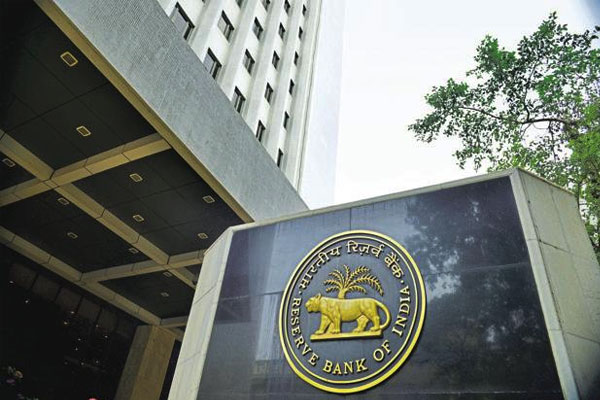 Reserve Bank Of India IFSC Code and MICR Code
Reserve Bank Of India IFSC Code and MICR Code
Find Reserve Bank Of India IFSC Code, MICR Code and branch details for NEFT, RTGS & IMPS transactions.
 Reserve Bank Of India IFSC Code and MICR Code
Reserve Bank Of India IFSC Code and MICR CodeFind Reserve Bank Of India IFSC Code, MICR Code and branch details for NEFT, RTGS & IMPS transactions.
 Reserve Bank Of India IFSC Code Finder - Select Your State
Reserve Bank Of India IFSC Code Finder - Select Your StateIn today's technologically advanced world, online banking is a crucial part. IFSC code is one of the most vital aspects to avail the amazing facilities of online banking. Reserve Bank of India IFSC code too is necessary to know as it helps you identify the branch location in terms of any online transactions. Indian Financial System Code (IFSC) is a special combination of eleven alpha/numeric characters. The main function of the IFSC code is to identify the branch destinations to route online transactions without fail.

To successfully complete any online fund transfer, the sender needs to know the IFSC code of the receiver's bank branch. Without the knowledge of this, one cannot complete any online fund transfer. Any IFSC code contains three parts: the first four characters represent the bank's name, the fifth number is zero, and the last six characters stand for the branch code.
Reserve bank of India introduced the Indian Financial System Code to allow customers to transfer money electronically. It is basically an interbank fund transfer system, and RBI plays the role of a connecting link between the sender and the receiver's bank. Reserve Bank of India has its own assigned IFSC code as well to distinguish its different branches. Like all other bank branches, RBI too has an eleven-character IFSC code.
The format of the Reserve Bank of India IFSC code is also the same as the others: the first four characters representing the bank name, zero is the fifth number, and the remaining six characters stand for the branch code. To receive money via an online fund transfer, you have to know the RBI IFSC code. If somebody has to send money through any online payment mode, you must tell the receiver the IFSC code of your RBI account branch along with the account number and other details.
Reserve Bank of India IFSC code has a crucial use in any form of online fund transfer as it helps locate the account holder's branch location.
Magnetic Ink Character Recognition helps to identify the authenticity of paper-based documents in the database of the bank. You can find the RBI MICR code in the bank's chequebook. The MICR code plays a vital role in the safety of fund transfers. MICR is a nine-digit code, and it identifies branches that take part in the Electronic Clearing System (ECS).
The structure of RBI's MICR code is- the first three digits symbolize the city name, the following three digits correspond to the bank code, and the final three numbers stand for the branch code. The MICR code is needed for the smooth functioning of different financial forms, and it also helps in the faster clearance of cheques.
RBI SWIFT code is a unique eight-character code. SWIFT code is required for a safe and fast online transfer of money, especially during international fund transfers. The SWIFT code of RBI is used for transferring funds to international banks. Each branch of RBI has its separate SWIFT code, which helps in the identification of its branches.
The structure of RBI's SWIFT code is- the first four characters represent the bank, the middle two represents the country code, and the last two represent the location code.
You can find the Reserve Bank of India IFSC code, MICR code, and SWIFT code of Reserve Bank of India on the Find Your Bank website.

To find the IFSC, MICR, and SWIFT code on the https://findyourbank.in/ website, you need to-.
Additionally, you can find these codes in the Reserve Bank of India mobile app, which makes finding these codes a lot easier.
IFSC, MICR, and SWIFT codes can also be found in the bank passbook and chequebook. You can see the MICR code in the button of the RBI checkbook. Similarly, the RBI IFSC codes are present in the bank passbook.
You will also find these codes via RBI's official website and through NET banking. You can also contact RBI customer care to ask for the SWIFT code. You can log in to your account online to see recent transactions and find the SWIFT code there as well.
The Reserve Bank of India is not for every person to open accounts. In fact, it operates other Indian banks and decides the charges applicable for different fund transfer methods such as NEFT, RTGS, and IMPS. However, institutions that can open bank accounts at the RBI are- state government, state government departments/ bodies/ agencies, etc.
Reserve Bank of India was established on 1st April 1934 following the Reserve Bank of India Act. At present, RBI has four zonal offices in Mumbai, Delhi, Chennai, and Kolkata. Further, it has nineteen regional offices and ten sub-offices spreading across different states of India.

You can contact customer care to inquire about the CIF number of the Reserve Bank of India. You can also find it in the RBI account passbook.
You can find the IFSC code of RBI through the https://findyourbank.in/ website. It is also available on the RBI official site and its passbook.
The MICR code of RBI is a nine-digit code that helps in the faster clearance of cheques.